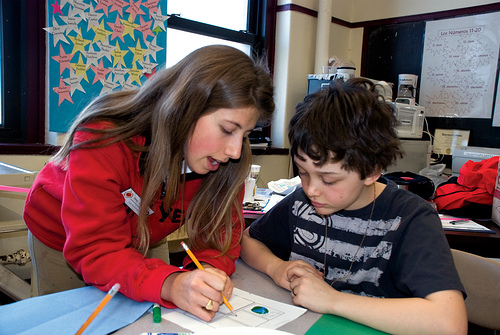The number of public school administrators and nonteaching staff has grown seven times as fast as student enrollment since 1950, according to a new report published by the Friedman Foundation for Educational Choice. Taxpayers would have saved $37.2 billion in that time if the teaching force had instead increased one and a half times as fast as student enrollment and nonteaching staff matched enrollment.
This is enough to have raised every teacher’s salary by $11,700 per year over that time, given families in poverty a $2,600 annual voucher for each child, reduced property tax burdens, or eased state fiscal stress, the report notes.
“The staffing levels in the public school system are ultimately a politically generated level, and it’s the preference of powerful interests that are related to the public school system,” said Matthew Ladner, research director for the Foundation for Excellence in Education. “The problem is it has not [resulted in] a proportional increase in student achievement.”
Since 1950, U.S. K-12 student enrollment increased 96 percent, administrative and other nonteaching staff increased 702 percent, and teacher numbers grew 252 percent.
Author Benjamin Scafidi, a Friedman Foundation economist, compiled data from the National Center for Education Statistics for “The School Staffing Surge: Decades of Employment Growth in America’s Public Schools.” He also considered nationwide National Assessment of Educational Progress test scores and graduation rates.
More Staff, Less Learning
Scafidi found student scores have, on average, decreased as staff numbers surged.
“There is not a lot of evidence to suggest that increased nonteaching staff is even associated or much less causally associated with improved student outcomes,” said Martin West, a Harvard University assistant professor of education.
Empirical studies have demonstrated a tradeoff between quality and quantity for teachers, Scafidi said.
“If you keep hiring teachers, you’re hiring more and more low-quality teachers,” he said. “Good teachers don’t grow on trees. “
This reality contradicts the widespread belief that smaller classes create better results, Ladner said: “Teacher quality is much more important than class size.”
Wraparound services such as psychologists, college counselors, social workers, food and even healthcare providers account for most non-instructional personnel, says Noelle Ellerson, a spokeswoman for the American Association of School Administrators. The public now expects schools to provide these, she said, and they “are needed to get the students to learn.”
‘Cost Disease’
The report casts doubt on claims massive education funding increases benefit children, West says. Some attribute part of the problem to Baumol’s cost disease, a phenomenon where labor costs rise even though workers are not producing more, because productivity gains in other sectors push wages up in competing sectors.
But that can’t explain all the extra spending, West said, because “[Baumol’s] theory would emphasize you’d spend more on the same number of employees.”
The ratio of executives to employees is higher in elementary and secondary schools than in any other business or industry, Ellerson notes.
Scafidi also found 2001’s No Child Left Behind—the most expensive and intrusive version of the broadest federal education law—did not itself inflate school staff. Before 2001, public schools added staff 2.3 times faster than student enrollment, which was also true after NCLB. Before NCLB, nonteaching staff increased at a much higher rate than teachers. Afterward, these two groups increased at similar rates.
“NCLB certainly didn’t make things worse,” Scafidi said.
Choice Realigns Incentives
Unlike the current system of layers of bureaucracy and state rules, giving parents control over their child’s K-12 school funding “sets the institutional framework for education providers to come in with better and cheaper products,” Ladner said. “This is exactly the trend we see in the rest of the economy—entrepreneurs that are producing things that are better and cheaper. In education we see things that are more expensive and not better.”
The best education policies align with human nature, Scafidi said.
“We have to get public schools to do the right thing with public funds,” he said, “and the only way I see to do that is re-accountability through school choice.”
Learn more:
“The School Staffing Surge,” Benjamin Scafidi, October 2012: http://www.edchoice.org/CMSModules/EdChoice/FileLibrary/931/The-School-Staffing-Surge–Decades-of-Employment-Growth-in-Americas-Public-Schools.pdf
State-by-state map of staff increases, Friedman Foundation: http://www.edchoice.org/Research/Reports/The-School-Staffing-Surge/Map.aspx
Image by cityyear.




